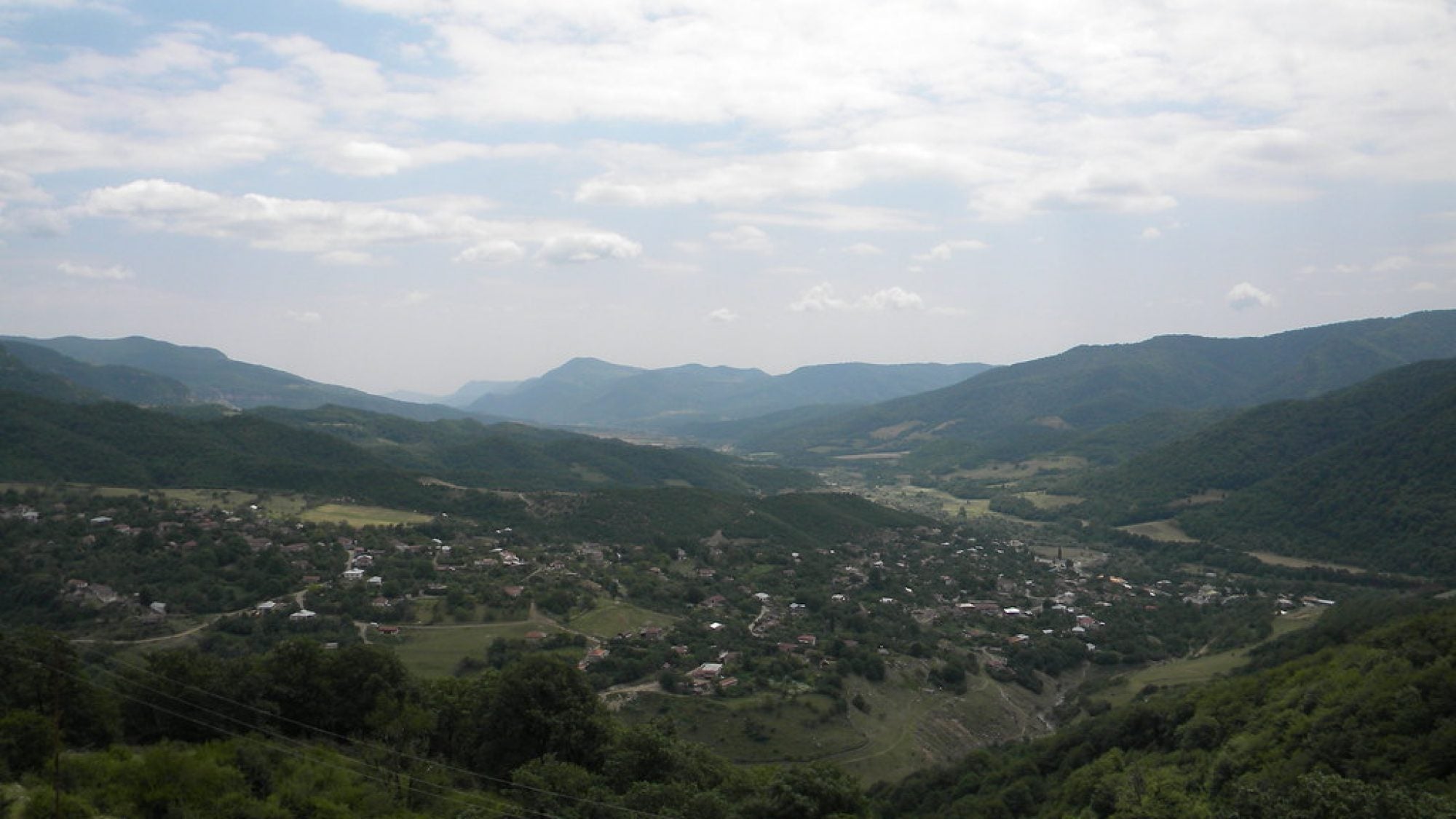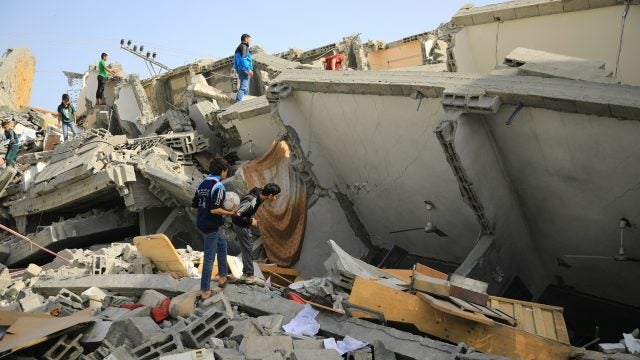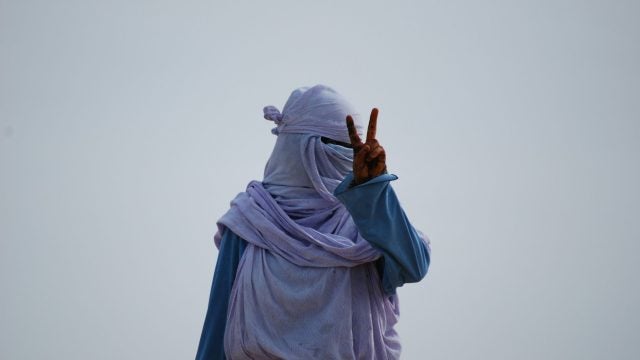
Title: The Forty-Day War and the “Russian Peace” in Nagorno-Karabakh
In the Fall of 2020, the forty-four day long Turkey-backed Azerbaijani offensive in the disputed Nagorno-Karabakh (NK) region is the most recent case of an “illiberal peace” outcome. The most challenging issue of this conflict, the status of the disputed Nagorno-Karabakh de facto state, remains unresolved, but the Azerbaijani military victory in the battlefield is now built into the Russia-brokered peace agreement on November 9th, 2020. As a case of a militarized victory consolidation, with illiberal powers now in charge of the post-war regional politics, the limits and liabilities of illiberal peace in the South Caucasus are increasingly revealed. The way the post-war outcomes and the emergent openings for conflict resolution will be handled in the Nagorno-Karabakh is a litmus test for the prospects of peace processes elsewhere in the increasingly multipolar Eurasia.
“All we are saying is give peace a chance,” is the opening line of John Lennon’s globally celebrated song, the soundtrack of public protest against the rapidly escalating Vietnam War in the 1960s.
These lyrics gain particular resonance for global security at this specific juncture in world politics. The number of conflicts ending in peacefully negotiated settlements has declined since the 2010s. Cases of states applying militarized and coercive approaches to solving ethno-political conflicts through war and violence are now becoming ubiquitous. Tragically, such cases manifest in the obliteration of institutions of peaceful conflict management of various depth and scope, many of which have their organizational roots in the post-Cold War 1990s. Such militarized approaches of victory consolidation in the last two decades have been observed in Sri Lanka, Russia, Turkey, Rwanda, and beyond. They are now openly advocated for in Ukraine by some commentators.
The most recent case of such is that of the Turkey-backed Azerbaijani offensive in the disputed Nagorno-Karabakh (NK) region—a forty-four–day war which ended on November 9, 2020, with a Russia-brokered trilateral agreement between Armenia, Azerbaijan, and Russia. The main third-party negotiation format, the OSCE Minsk Group, representing the United States, Russia, and France, emerged sidelined during and after the war. While reflecting the norm of nonmilitary conflict resolution, the format has always been organizationally weak, with almost no connections to civic actors and broader societies on all sides. Already limited and politicized, people-to-people contacts became highly choreographed and then dried up after President Ilham Aliyev succeeded his father Heydar in 2003. For years the conflict enforced the security-versus-democracy dilemma in both Armenia and Azerbaijan. Armenia’s Velvet Revolution three years ago strengthened the pressure on the Aliyev regime, the lone, and the hereditary, autocratic survivor in the South Caucasus. Only Belarus’ Lukashenko in the broader Eastern Europe, holds the dubious honor of longer service as leader, with roots in the twilight years of Soviet politics.
After several failed attempts, Russia succeeded in stopping the war on November 9. A Kremlin-brokered trilateral agreement between Armenia and Azerbaijan kept both Turkey and the European powers out, and Russian peacekeepers in. Even with the five-year renewable time limit for Russian peacekeepers stipulated in the trilateral agreement, political speculations abound as to whether or not Russian forces will ever leave Nagorno-Karabakh. The agreement calls for opening borders and transportation routes between Armenia and Azerbaijan, but has no mention of the conflict’s core issue—political status for the self-declared Republic of Artsakh/Nagorno-Karabakh.
The “Russian Peace” in Nagorno-Karabakh and its Prospects of Sustainability
In this backdrop, with clear militarized victory for Turkey-backed Azerbaijan, and the Russian peacekeepers providing security, this conflict is a new test case for what academics have dubbed ‘illiberal peacebuilding’: a process of “post-war reconstruction managed by local elites in defiance of liberal peace precepts.” The post-war impact of militarized victories remains insufficiently understood. Some scholars have hypothesized that under certain conditions such illiberal endings to armed conflicts can have “transformative” potential, while others highlight democratic declines and deepening authoritarianism in victors’ societies.
The way the post-war outcomes and the emergent openings for conflict resolution will be handled in the Nagorno-Karabakh case is a litmus test for the prospects of peace processes elsewhere in Eurasia. The Nagorno-Karabakh case is instructive because of its militarized outcome, and illiberal powers’ centrality as “conflict managers” under the new conditions. Still, learning to forge peacebuilding with illiberal players in the third-party seats may become the norm rather than the exception in the crystallizing multipolar world order. Assessing the prospects of sustainable ‘Russian peace’ in Nagorno-Karabakh is therefore imperative.
Having emerged victorious with all seven provinces surrounding Nagorno-Karabakh, along with a chunk of the disputed territory, the Aliyev regime holds many cards. Peacebuilding practitioners have advocated for Azerbaijan to utilize the agreement to foster people-to-people contacts and allow for broader avenues of dialogue with the Armenian community in Nagorno-Karabakh and Armenia. The Kremlin-brokered agreement incentivizes such integrative and associative approaches to post-war outcomes for Azerbaijan. The agreement stipulates the revival of Soviet-era transit routes, which would improve connectivity for all involved. In particular, it would also connect Azerbaijan to its exclave on Armenia’s western border, Nakhichevan, via transit routes through Armenia’s southern Syunik region. Armenia would also gain from better connectivity to regional markets.
The revival of this southern transportation route would alleviate the economic fracture of the South Caucasus as a whole. Disrupted trade routes due to the conflict have translated into squandered economic development opportunities, including costly rerouting of transportation and energy infrastructure. According to the World Economic Forum and the World Bank, the South Caucasus and Central Asia have the highest levels of barriers to supply chains. It is estimated that removing these barriers would raise exports in these regions by more than sixty percent and imports by fifty percent, and increase regional gross domestic product by nearly ten percent, the second highest potential gain in the world. In short, there are clear economic dividends for all countries in the region and a clear path for conflict resolution in Nagorno-Karabakh within this emergent prospective regional context of integration and connectivity.
“All we are saying is give (illiberal) peace a chance”
In Nagorno-Karabakh, the liberal framework of negotiated settlement, while organizationally intact, remains weakened. Instead, the Kremlin remains in charge of the post-war order in Nagorno-Karabakh, but its capacity and willingness to perform this role remains questionable. Since signing the agreement, the Azerbaijani forces have captured around two hundred Armenian civilians and service members, and the Azerbaijani government refuses to release them. Pressure on Baku for their release is building on both sides of the Atlantic, as a Human Rights Watch report documented Armenian prisoners of war being abused in custody. More recently, on May 12, 2021, a little over six months after the war’s end, Azerbaijani forces advanced and lodged themselves 3.5 kilometers into Armenian territory. Azerbaijan issued a statement that its military was there to engage in border delimitation, while countries like France, India, Iran, the UK, and the US were quick to denounce the militarized incursion by Azerbaijan on its international border with Armenia. Since May 12, six Armenian soldiers have been captured by Azerbaijani forces occupying Armenian territory.
This continuing “hostage crisis” and Azerbaijan’s most recent “borderization” tactics reflect the limited prospects of illiberal, “Russian peace” on the ground, indicating that the Kremlin is either incapable or unwilling to exert pressure on Baku in fully implementing the November 9th agreement. All in all, by keeping the POWs President Aliyev, with tacit compliance or incapacity from the Kremlin, has produced an effective lever to influence the domestic politics in Armenia, a nascent democracy, where the war losses have created backlash against the Pashinyan government. Such tactics, contrived and by the Aliyev regime and condoned by Russia and Turkey, emerge as instruments of authoritarian coordination between these states, partly to challenge Armenia’s young democratic politics ahead of upcoming snap elections there on June 20. And in the most recent survey from the Caucasus Research Resource Center in Armenia, around seventy-eight of respondents listed the return of over 200 prisoners of war and other captives as a necessary first step for any negotiated settlement to resume.
Most recently, in the backdrop of the “hostage crisis,” President Aliyev unveiled a victory trophy park, complete with displays of helmets of Armenian soldiers that died in the war and their life-size wax mannequins with exaggerated racialized features. One Armenian commentator, Eric Hacobian, made parallels between this park and Saddam Hussein’s display of helmets of Iranian soldiers that died in the 1980s Iran-Iraq war. Bahruz Samadov argued that the park reflects Azerbaijan’s “authoritarianism inside and out” and a new surge towards hegemonic authoritarianism in Azerbaijan.
As effectively articulated by Samadov, deepening authoritarianism in Azerbaijan remains the most significant structural obstacle standing in the way of a prospective negotiated and long-term settlement of the conflict. While learning to live with illiberal powers in control of peace processes is necessary, understanding the liabilities and levers in such circumstances is also critical. Since the end of this Turkey-Azerbaijani offensive last fall, President Aliyev continues his pre-war bellicose and maximalist rhetoric. The war victory has been the single greatest political boost that he has received in his seventeen years of authoritarian rule. As studies have shown, militarized victory consolidation, a “victor’s peace”, creates a catch-22 for the emboldened autocrats. Such outcomes can remove war from the domestic agenda, allowing space for domestic pressures on the government. Aliyev’s actions so far reflect his efforts to prolong the rally-around-the-flag effects from the war victory, and his desire to sustain the conflict, which remains a key source of legitimacy for his rule.
But a more insidious current may exist in Aliyev’s calculation. His policies de-humanize the very actor with which negotiations and co-existence are envisioned in the agreement, and Baku’s post-war posture presently signals a continued sabotage of the OSCE Minsk group’s existing, albeit weakened, negotiated format. If so, this may suggest an effort to transition this conflict from its already diluted peace process to a counter-insurgency campaign, similar to Turkey’s policies on the Kurdish conflict, Russia’s in Chechnya, and the Sri Lankan civil war.
While the ball is in Azerbaijan’s court, the need for Armenia to support negotiated settlement formats is key. The NK conflict has fed its own, softer, forms of authoritarianism over the past three decades in Armenia. Armenia’s new chance of a democratic future, after its democratic breakthrough in 2018, will be hard to realize with an unresolved conflict and persistent rivalry with a neighbor. And delivering democratic dividends in a fractured region, with closed borders and poor accessibility to global markets, will remain an uphill battle. The post-war pathways for Armenia point to deepening its democracy, and openness to transforming the rivalry with Azerbaijan.
However, the public, understandably, remains pessimistic about prospects for peaceful coexistence with Azerbaijan. A recent CRRC poll showed seventy-two percent of respondents lacking confidence in peaceful coexistence, with almost fifty-eight percent believing that the war continues and that hostilities will resume. Peacebuilding practitioners on the Armenian side remain lukewarm, at best, to the prospects of peacebuilding in these new conditions. The Armenian hostages held by Azerbaijan remain the main obstacle for many, along with most recent “borderization” tactics applied by Baku on Armenia’s territory. This is compounded by the bellicose language and the double-speak coming from Baku.
The persistent weakness of Armenia’s party politics has done little for channeling comprehensive party platforms for fresh diplomacy of direct, unmediated engagement with Azerbaijan and its ally, Turkey. The latter maintains its unrepentant stance on the genocidal ending of the Ottoman Empire, a posture that exacerbates the Armenians’ deep sense of insecurity. Instead, most political parties currently campaigning for the snap parliamentary elections this June have assumed pro-Russia policies, which is set to dilute the more nuanced positioning on Russia that had transpired in the country in the post-Velvet years before the war.
In conclusion, strong security guarantees for the Armenian community in Nagorno-Karabakh and Armenia proper is a necessary first step for generating the political will for negotiated settlement. Through Western support bilaterally and/or multilaterally via the OSCE Minsk Group format there may yet be a path for this “illiberal peace” in this conflict to become sustainable. Unresolved conflicts are effective engines of authoritarian resilience, particularly in the backdrop of global democratic backsliding.
. . .
Dr. Anna Ohanyan is the Richard B. Finnegan Distinguished Professor of International Relations at Stonehill College and nonresident senior scholar in the Russia and Eurasia Program at Carnegie Endowment for International Peace. A two-time Fulbright scholarship recipient, she is the author and editor of several books, including Networked Regionalism as Conflict Management (Stanford University Press 2015) and Russia Abroad: Driving Regional Fracture in Post-Communist Eurasia and Beyond (edited, Georgetown University Press, 2018). She is a frequent contributor to Foreign Policy, The Washington Post, Al Jazeera, and other publications. Her latest book project is The Neighborhood Effect: The Imperial Roots of Regional Fracture in Eurasia.
Image Credit: Timon91, via Flickr
Recommended Articles

This piece examines the UK government’s proscription of Palestine Action under the Terrorism Act, situating it within a broader trend of shrinking space for public dissent. It argues that the…

This article analyses the distortions of the International Humanitarian Law (IHL) notion of proportionality in the context of the Israel-Gaza war. It discusses Israel’s attempts to reinterpret proportionality to justify…

The escalating women’s rights crisis in Afghanistan demonstrates a gap in international legal protections of the rights of women and girls. The international community should fill this gap by making…